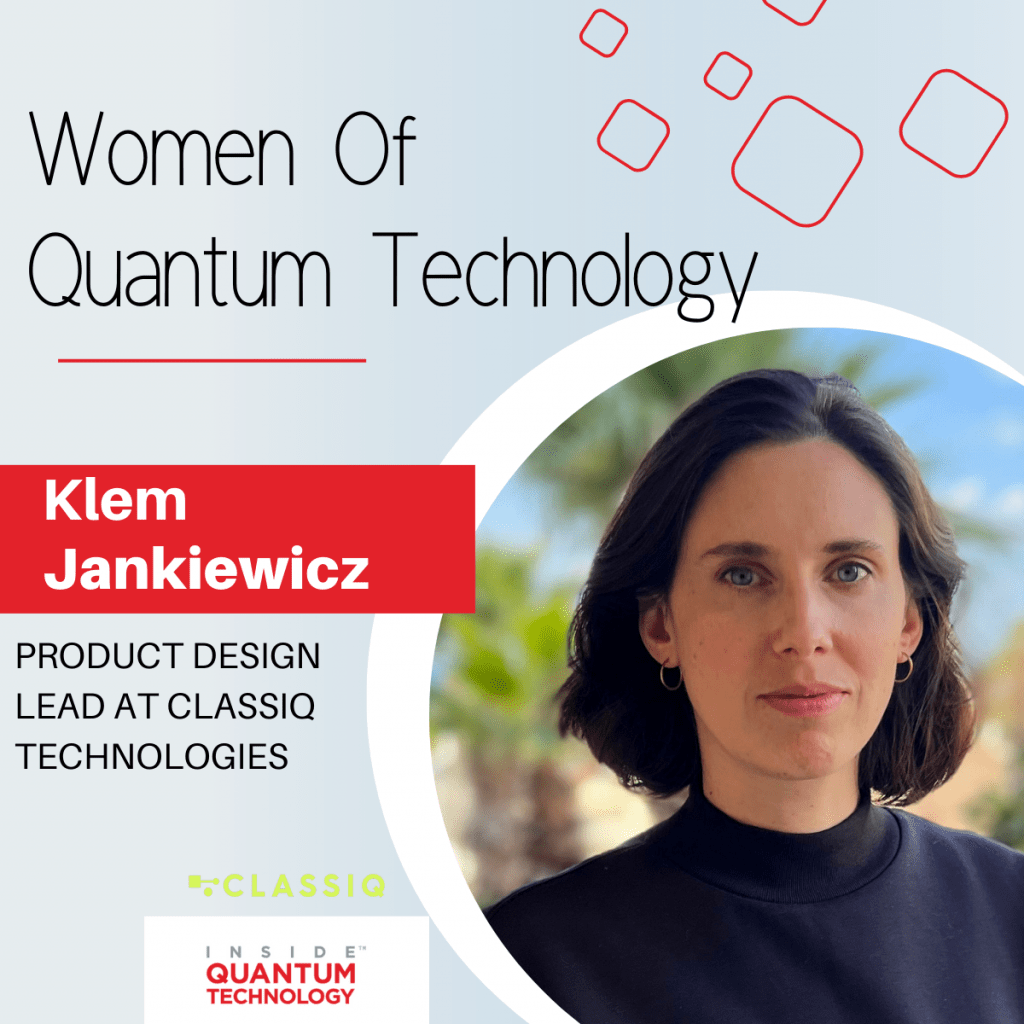Quantum technology brings together many different disciplines, like engineering, design, mathematics, computer science, and others. As a designer, currently working as a product design lead for Classiq Technologies, Klem Jankiewicz saw the many opportunities that quantum offered. “I look for projects, in disruptive industries that have a potential for a meaningful change,” Jankiewicz stated. “Quantum technologies are all about this potential.” Jankiewicz was also drawn into the quantum industry due to its early stages. “The quantum market is still developing. From a design perspective, this is a perfect moment to be part of,” she stated. “The quantum human-computer interaction is not yet an established field, and we are only starting to build standards. This is a rare thing to be able to design something that wasn’t designed yet. I think this is every designer’s dream.”
With over three years of working in the quantum industry, Jankiewicz got her start by working at Singapore’s Center for Quantum Technologies (CQT) as part of a group invited by Professor Artur Ekert from Oxford University. “I went there without any prior experience or knowledge in quantum physics or quantum computing,” Jankiewicz said. As a visiting designer, Jankiewicz worked with a team of developers and physicists to create an interactive educational game about quantum physics. “I decided to stay in the field, and later founded Quantum Flytrap with physicist Piotr Migdał,” she said. Quantum Flytrap developed into a free-to-use virtual lab that offers users a way to learn quantum computing via a no-code interface. “It is used by educators from high schools to those at Oxford, or Stanford University, “Jankiewicz added. The team decided to close Quantum Flytrap in October 2022, but the lab remains free for everyone to use on their website.
Jankiewicz has been working on several other quantum projects. “As QF, we built Pulser Studio for Pasqal,” Jankiewicz said. “We designed and developed a no-code interface for programming neutral atoms QPUs to make Pasqal’s technology accessible for more and less advanced users.” Jankiewicz also collaborated with Xanadu on a project related to quantum data.
Most recently, she has become the Product Design Lead at Classiq Technologies, one of the leading quantum computing software companies.
With her design background, Jankiewicz believes that design can play a role in making the quantum industry more inclusive. “User interfaces are the way we interact with a particular technology. Their design can make the interaction seamless and intuitive or challenging and exclusive. For me, it’s not just about gender or misrepresented groups, but also less advanced and more advanced users, I think we can have great solutions designed for the most advanced users while at the same time being inviting for beginners.”
But as a woman and a mother, Jankiewicz also sees representation as important. As she explained, “We need to keep trying to understand why women are dropping out at a certain point,” she said. “I think it starts at an early age. I have a daughter who is six, and she loves books and videos about science, particularly astronomy. But from an early age, representation is crucial for her, she wants to see female astronauts or female scientists talk.” As far as the representation of these females in pop culture or educational videos, things seem to be getting better. “But at more advanced levels, there is less representation,” Jankiewicz added. “It’s essential to understand why women may be leaving the industry to ensure more equal participation in the future, especially since it’s well proven that diverse teams build better and more innovative products.”
Kenna Hughes-Castleberry is a staff writer at Inside Quantum Technology and the Science Communicator at JILA (a partnership between the University of Colorado Boulder and NIST). Her writing beats include deep tech, the metaverse, and quantum technology.
